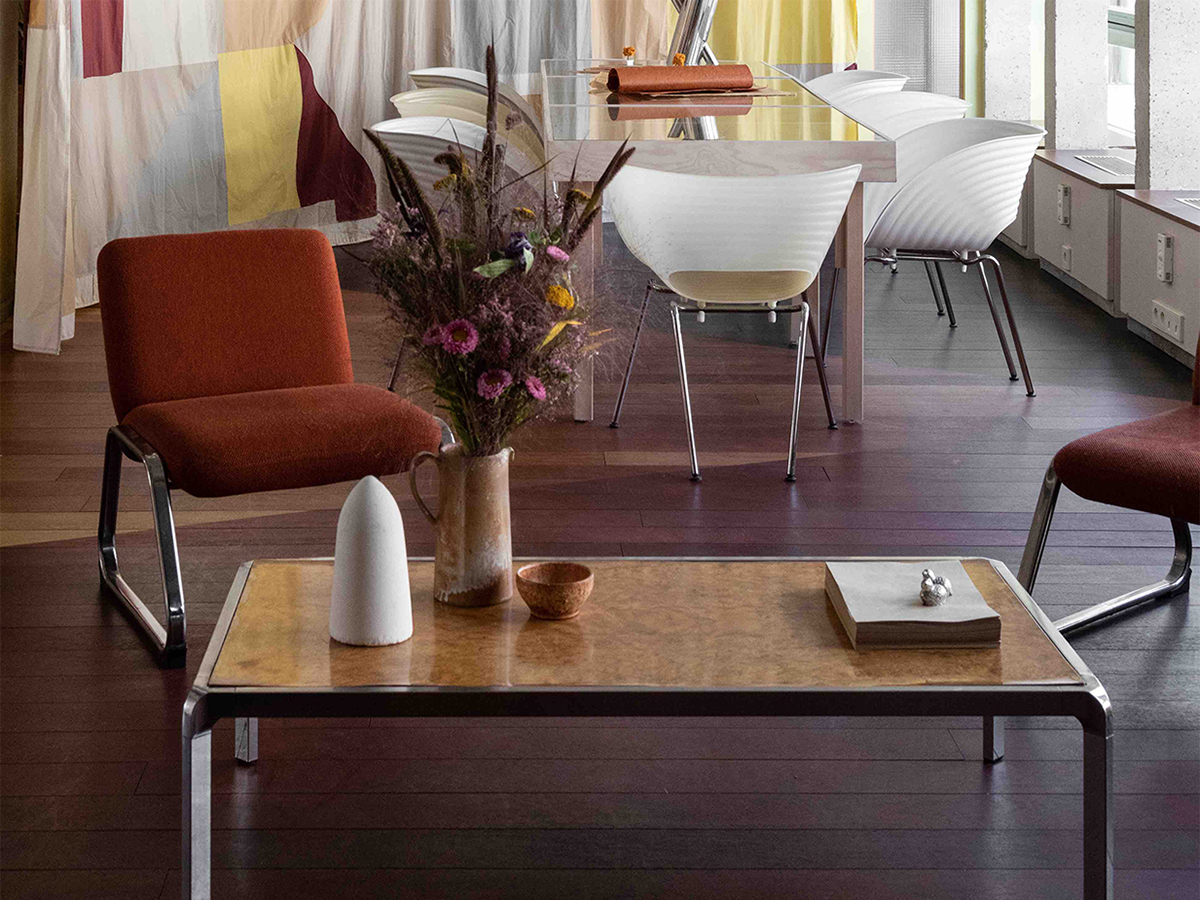
The Sonic Bloom installation by artist Yuri Suzuki captures the sounds of the city and the whispers of passersby in a collection of colourful ‘speaking tubes’ that seemingly bloom in an inner-city garden
London’s Brown Hart Gardens in Mayfair is full of pretty flowers and trees in raised planters—but recently, something altogether more unusual bloomed in the rooftop garden.
A large installation that resembles a bouquet of trumpets in vibrant primary colours has taken shape in front of the domed gazebo. Designed by acclaimed artist Yuri Suzuki, commissioned by Grosvenor, and curated by Alter-Projects, the purpose of Sonic Bloom is to whisper the city’s secrets to the garden’s visitors and connect people.

“Public art should engage and actively interact with local communities,” says Suzuiki. “It’s my wish that this sculpture works as a communication device to create opportunities to start a conversation with someone. Sound is one of the strongest perceptions to humans, and can create quite an emotional connection.”
Sonic Bloom has 14 horns attached to ‘speaking tubes’ that connect to smaller receiver funnels that are arranged at different heights to accommodate children and adults alike. The large horns at the top have various orientations to capture sounds from both the street and the sky.

With seats integrated around the base, the installation is both a conceptual, sonic sculpture and a functional piece of street furniture, allowing visitors to rest or a spot to eat lunch. At the same time, they can hear soothing environmental sounds from the city or the whisper of a nearby voice, captured by the top horns and transported in an unexpected direction through speaking tubes—the same technology formerly used for intra-ship communications.
“I have always been fascinated by the surrounding noise of each city’s original characteristics in their soundscapes,” explains Suzuki. “It could be the sound of a language, police sirens, or the sound of church bells. I treat the soundscape as music, it is a beautiful example of humanity.”

This kind of accidental connection with the people and strangers around us is even more meaningful in a post-pandemic world. Suzuki describes Sonic Bloom as acting as a bridge between two times—a return to older forms of communication, such as speaking, but carried out in a socially distanced way.
While the sculpture has been in place since August, a new digital experience launched in September as part of the London Design Festival. A dedicated website allows people anywhere in the world to contribute sound—anything from a voice to a sound recording—which is analysed by an algorithm that turns the sound into a digital flower and musical sound clip that is then shared on a map of London. “We wanted to present a fundamental experience that shares both digital and physical sculpture,” says Suzuki.

“Sonic Bloom offers communities the opportunity to explore the essence of how and why they communicate,” says curator Anne-Laure Pingreoun. “In a playful setting, it allows visitors to get to the very root of what it means to be a part of a community after over a year of isolation. At a time when the world seems to be emerging from such an emotionally-taxing period, public artwork provides a cheerful yet inquisitive platform for communities to rediscover themselves, both collectively and individually.”
For more information visit sonicbloommayfair.co.uk
Images by Alberto Balazs































